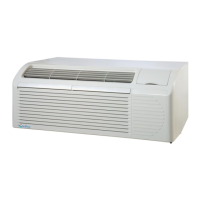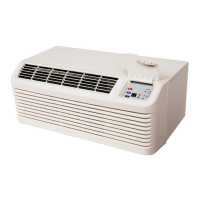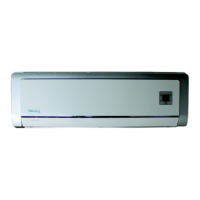What to do if my Sea Breeze Air Conditioner LCD window indicates 'E4'?
- JJackie ZimmermanJul 31, 2025
If the LCD window of your Sea Breeze Air Conditioner displays 'E4', it indicates that the water tank is full. You should drain the water tank.
What to do if my Sea Breeze Air Conditioner LCD window indicates 'E4'?
If the LCD window of your Sea Breeze Air Conditioner displays 'E4', it indicates that the water tank is full. You should drain the water tank.
What does it mean if the LCD window of my Sea Breeze PAHS127 Air Conditioner indicates 'E1'?
If the LCD window on your Sea Breeze Air Conditioner shows 'E1', it could be due to a power interruption or a defective unit. To resolve this, turn the unit off, disconnect it from the power source, wait 10 minutes, then reconnect and turn it on again. If the error code reappears, the unit needs to be serviced.
Why is my Sea Breeze Air Conditioner not working?
Your Sea Breeze Air Conditioner might not be working due to several reasons: it might not be correctly plugged in (ensure it is properly plugged in), the plug or socket could be defective (consider changing them), the fuse might be blown (replace the fuse), or the breaker might have tripped (reset the breaker; if the problem continues, contact a licensed technician).
How to fix a Sea Breeze PAHS127 when the indicator is on but the unit isn't running?
If the indicator light is on but your Sea Breeze Air Conditioner isn't running, the timer might be activated. Try resetting the timer or allow it to time out.
Why is my Sea Breeze PAHS127 not working in cooling mode?
If your Sea Breeze Air Conditioner isn't working in cooling mode, it could be due to a couple of reasons: either the room temperature is below the temperature setting, or there is frost on the evaporator. In both cases, this is normal operation, and the unit is likely defrosting. It will start running again once defrosting is complete.
Explains the thermodynamic cycle of the air conditioner.
Details model-specific parameters like cooling/heating capacity, voltage, and airflow.
Clarifies measurement conditions for cooling, heating, and noise levels.
Illustrates the front of the unit with key components labeled.
Illustrates the back of the unit with key components labeled.
States operational temperature ranges and advises on proper unit placement.
Outlines power supply needs and safety features of the power cord.
Details requirements for the power source to prevent fluctuations during compressor startup.
Identifies and labels the buttons on the control panel.
Illustrates the symbols and indicators shown on the LCD display.
Instructions on powering the unit and selecting modes, fan speed, and temperature.
Guides on programming timers and activating the sleep mode.
Step-by-step guide for operating in cooling and dehumidifying modes.
Instructions for fan-only mode and heating operation for PAHS127.
Explains drainage methods and provides setup for continuous and manual drainage.
Identifies the remote control's components and explains key button functions.
Details on using the MODE, TEMP, and FAN buttons for unit control.
Guides on using the TIMER and Hr/Min buttons for time settings.
Provides a numbered sequence for operating the unit in cooling mode via remote.
Provides a numbered sequence for operating the unit in heating mode via remote.
Provides a numbered sequence for operating the unit in dehumidifying mode via remote.
Provides a numbered sequence for activating and using sleep mode via remote.
Provides a numbered sequence for activating auto mode via remote.
Explains how to set the ON and OFF timers using the remote control.
Instructions for attaching casters and assembling the drain pipe.
Guidelines and cautions for mounting the air exhaust duct, including length and placement.
Instructions for assembling the window kit and attaching the exhaust duct adapter.
Instructions on cleaning the air filter and the unit's exterior surfaces.
Addresses common problems, error codes (E1, E4), and their solutions.
Lists general warnings, other precautions, and serious safety advice.
Offers a special guide for the mobile air conditioner/heater's self-contained nature and local cooling effect.
Outlines the limited warranty period for parts/compressor and provides contact information.
| Brand | Sea Breeze |
|---|---|
| Model | PAHS127 |
| Category | Air Conditioner |
| Language | English |











